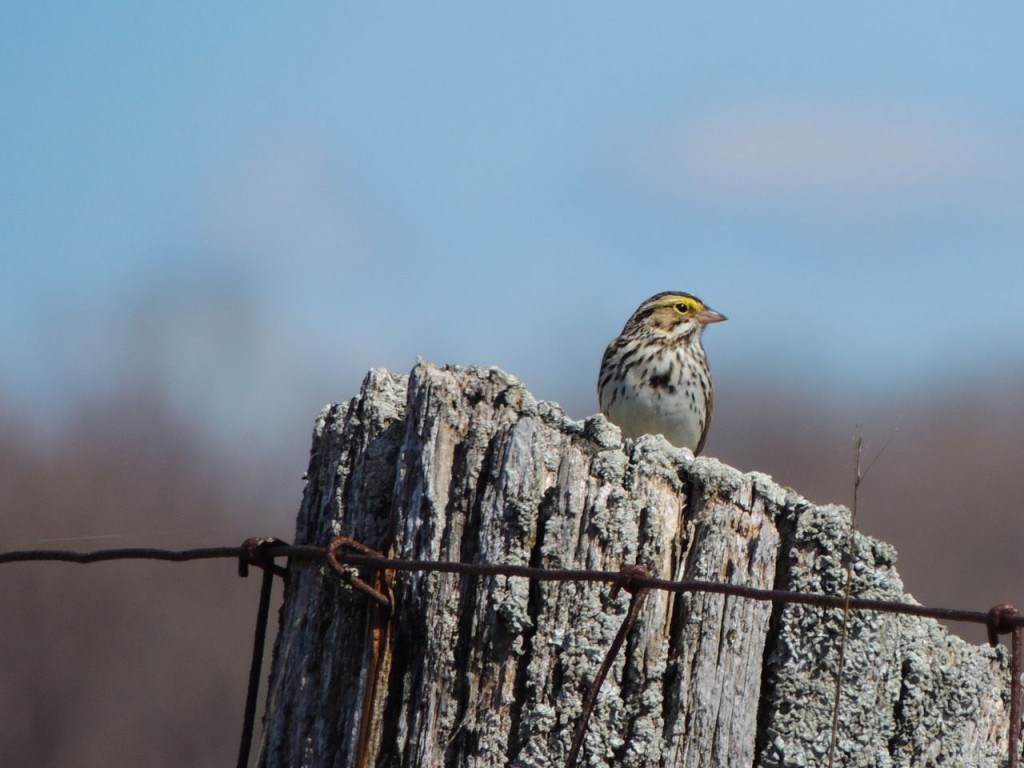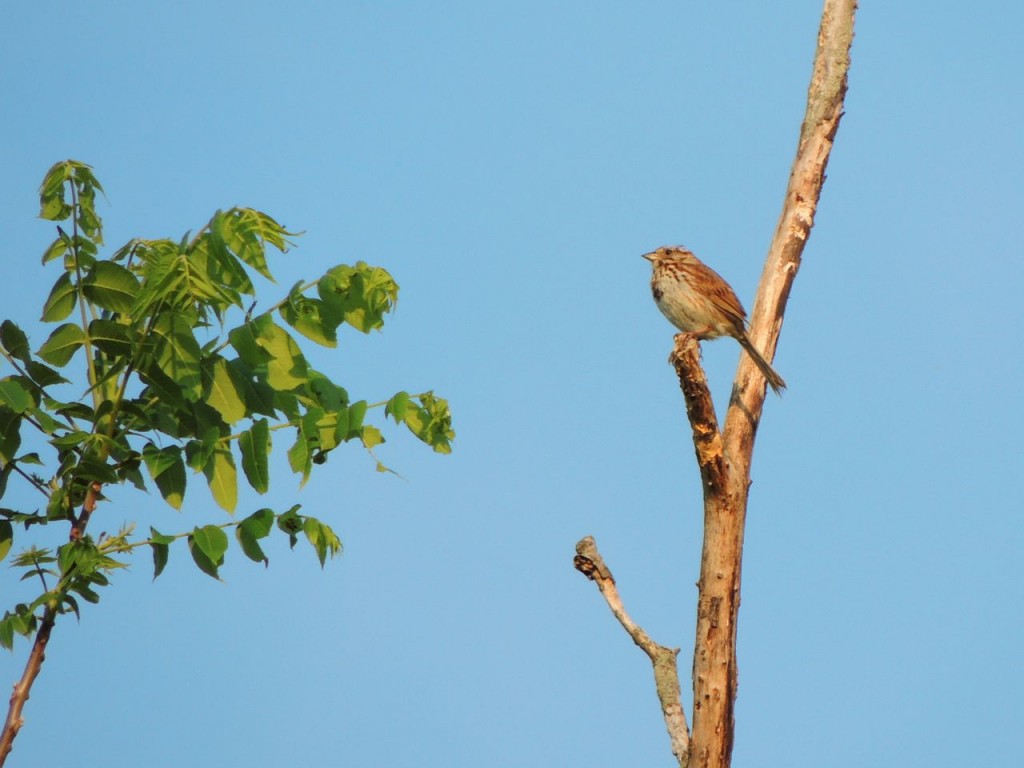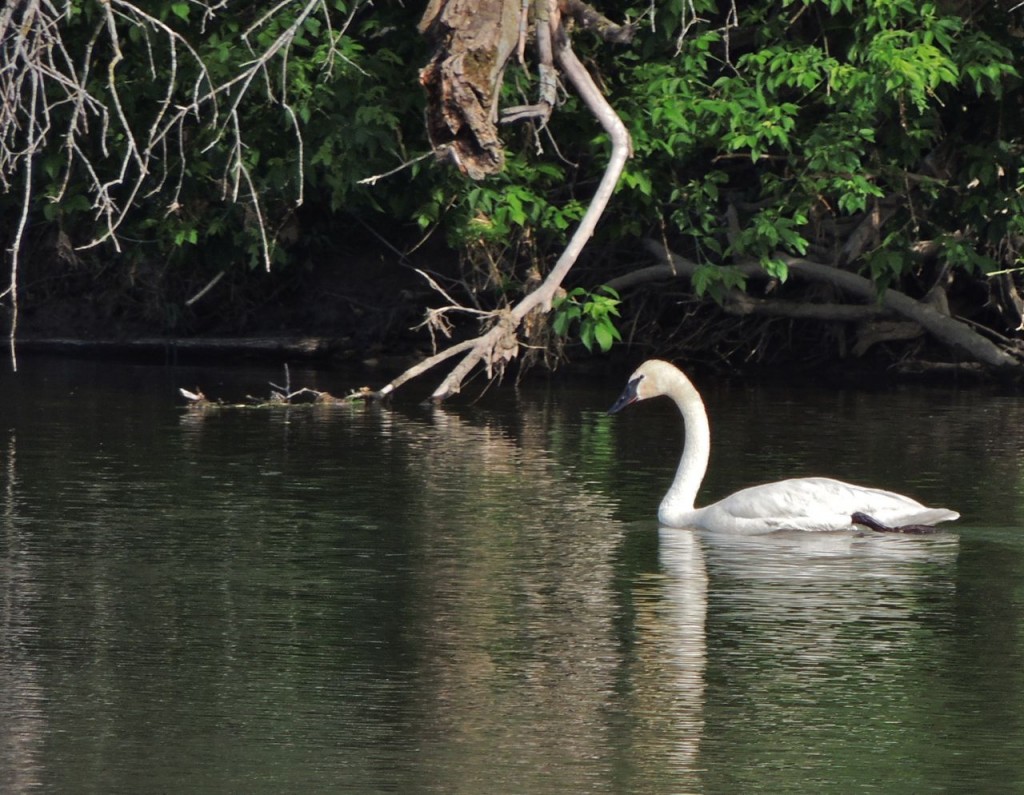29 May 2015 Cayuga ON. I puzzled over two funny sightings today at the bird observatory. First a mystery sparrow and then a Trumpeter Swan.
On my early morning arrival, I heard a Savannah Sparrow singing from quite high in a Black Walnut tree. It’s a distinctive song, a sound of wide-open, sometimes weedy fields, dry and high pitched, and described adequately as “tist tsit tsit t-seeeeeee rrrr”. If your upper range hearing isn’t what it once was, it’s an easy song to miss. Savannah Sparrows are quite common in appropriate habitat and I’m very familiar with them. To hear one at the bird observatory is a little out of place because it’s better described as a well-treed parkland or garden setting than dry field, but well, stranger things happen.

I took some long-shot photos of it before it flew away and, given the looking-up-at-its-belly angle, it is a credible (though far from conclusive) Savannah Sparrow. A little later we heard it in another tree and managed to get closer, again it sang the Savannah Sparrow song, but just for a while and then it switched to a Song Sparrow’s song. At that point we all agreed that it was in fact a Song Sparrow; the habitat was the right fit, Song Sparrows are common and we managed to get a good look at it. We all shrugged and went back to the day’s routines; if the others thought I was hallucinating they were gracious enough not to mention it.

It leaves many questions in my mind: Why would a Song Sparrow sing a perfect Savannah Sparrow’s song? Songbirds learn their appointed song during their first few months of life. And they don’t just sing any old song; they faithfully learn their own species’ song from their parents and others of their species. I suppose it’s possible that this Song Sparrow had somehow mixed in with Savannah Sparrows somewhere and become imprinted with their song, perhaps on its wintering grounds; but then, singing isn’t something birds do in winter. How did this happen? I have no good answers, and I don’t think I’m given to hallucinations. The above photos may only confuse the issue.
Later on, as I reached the river during the course of doing the daily census, I heard the absolutely unmistakable sound of a Trumpeter Swan trumpeting. Now, Trumpeter Swans are a species in recovery in Ontario. Once extirpated, a small reintroduced population has grown in size and breeds fairly regularly to the north of us. They also winter in large numbers close to home, so I’ve come to know them fairly well. There’s no mistaking a Trumpeter Swan from anything else- especially when you hear them call; they sound just like a one-note blast on a trumpet. Had I found a pair of Trumpeter Swans on a pond or lake, I would have been pleasantly surprised at the expansion of their nesting range; as I said earlier they breed fairly regularly to the north of us. But all I found was this solitary bird paddling steadily down river and blowing a single trumpet blast about every hundred meters, an “Anyone there?” call I think. Had it lost its mate? Was it still, at this late date, looking for one? Was it just joy-riding. For all I know it might have continued on downstream, calling it’s plaintive “Anyone there?” note every hundred metres for the rest of the day.
